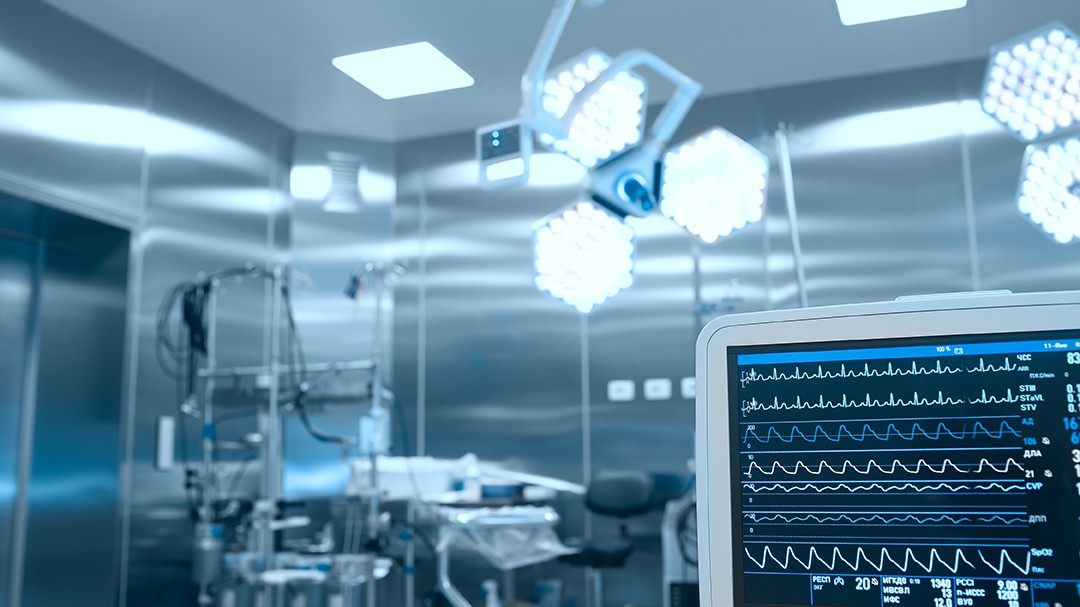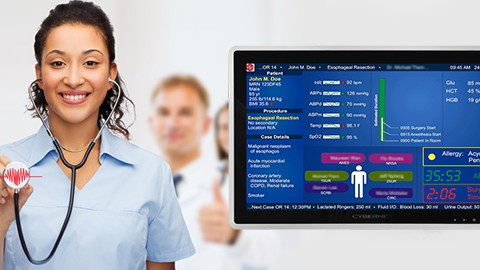When you hear the phrases “healthcare computers” or “medical tablets,” what images does your mind conjure up? If you’re like most people, you probably think of devices that hospitals use for things like charting, filling out eForms, and issuing electronic prescriptions. While the importance of these in hospital applications cannot be understated, this image of medical grade computing devices only scratches the surface of what they can do.
To truly appreciate the tremendous potential of these incredible devices, look no further than the field of biomedical engineering. A vast and fascinating discipline, biomedical engineering represents the intersection of medical science and numerous other areas, from mechanical and electrical engineering to chemistry and data science. In today’s digital world, medical grade computing devices are central to many advancements in this life-saving field.
What is Biomedical Engineering
Article Guide
If you’re looking for a concise definition of biomedical engineering, it would be “the application of engineering principles to the fields of biology and health care.”
This definition, however, fails to convey the true breadth of what is possible in this amazing field. It’s responsible for everything from creating artificial limbs and other prosthetics to software designed to visualize data from multiple medical devices. Medical grade computing devices are used at every level of this fascinating field and are in part responsible for numerous medical advances that just a few decades ago would have seemed like science fiction.
How Medical Computers Propel Biomedical Engineering
With the vast array of other disciplines that Biomedical Engineering draws from, the possible uses of medical grade computers within the field are truly limitless. In fact, biomedical engineers are responsible for some of the more creative uses of these medical grade computing devices. This means, of course, that this blog will only highlight a small fraction of the use cases for medical computers and tablets within biomedical engineering.
With that in mind, below are a few of the ways medical grade computing devices make biomedical engineering possible.
Bioinformatics
Within biomedical engineering, bioinformatics is the field that most leverages concepts from data science and software engineering. Bioinformatics involves the creation of software to collect, analyze, and visualize large sets of biological data. It is most commonly associated with genomics and DNA sequencing, though its applications extend far beyond that.
Medical PCs are absolutely crucial to the field of bioinformatics as they offer numerous features that simply do not exist on consumer-grade products. They are particularly useful in laboratory settings. When analyzing genetic material or live cells, the integrity of your samples is of utmost importance. As such, samples are often analyzed in cleanrooms designed to keep out outside contaminants like dust and particulates. It may not seem like it to a layperson, but throwing an ordinary consumer-grade computer into such an environment can cause problems.
Medical Panel PCs solve these problems. Designed with sealed bezels and rated IP65 so they are much easier to thoroughly disinfect. They also come with fanless cooling systems to eliminate a weak link that can potentially suck in dust and end up failing which could ruin the whole computer.
3D Printing
When it comes to materials fabrication, 3D printing represents the cutting edge of technology, and it has many applications within Biomedical Engineering. The first and most obvious application of 3D printing technology is the design and creation of custom-made prosthetics. Every human body is different, so it would make sense that not every prosthetic would fit every person’s body. Hence the necessity of custom-made prosthetics. Unfortunately, until recently, the creation of such devices was not only cost-prohibitive but impractical for many patients.
Thanks to biomedical engineering, it is now easier for medical facilities to design and fabricate prosthetics for patients in-house without relying on a third party. It is now possible for a technician to use a medical computer with a 3D scanner peripheral to scan a person’s body, input that data into 3D modeling software to create a digital model of a custom prosthetic, and then print the prosthetic using a 3D printer. Because this is happening right in the clinic or hospital in question, it is necessary to use a medical computer with an antimicrobial* housing to protect the computer casing from deterioration and degradation.
The use of 3D printing is not just limited to the creation of custom prosthetics, however. Thanks to the brilliance of biomedical engineers, it is now possible to 3D print using biological materials and even living cells. Such technology can, in theory, be used to 3D image entire artificial organs for transplant, potentially reducing the need for and eliminating shortages of donor organs. Clinical trials are already underway for things like 3D printed bones, ears, and corneas, and biomedical engineers are currently working on developing methods for 3D printing other more vital organs like artificial kidneys, stomachs, and even heart valves.
Because these artificial organs are made of biological material and are meant to be surgically implanted inside of patient’s bodies, keeping them from contamination is crucial for their success. Fortunately, a medical computer can be cleaned and disinfected repeatedly as often as needed and it can also withstand harsh chemicals. Their fanless designs also means medical pcs are the perfect solution for running such 3D printing applications.
Advanced Medical Devices
The area of biomedical engineering that most people are probably familiar with is the design and creation of medical devices. From the stethoscope to the pacemaker to the EKG machine, all of these devices result from applying engineering principles to solve problems in healthcare. Now that we are firmly in the digital age of medicine, more and more of these devices are relying on advanced digital components for their function and need medical computers or tablets to run.
Such devices are already making a huge difference in many patient’s lives. For example, Advanced Bionics uses rugged medical tablets to calibrate their cochlear implants. Cochlear implants are designed to help deaf and hard-of-hearing patients by converting environmental sounds into electrical signals that are directly transmitted to the ocular nerve, bypassing the inner ear entirely. Thanks to medical tablets, it is much easier for technicians to calibrate these miraculous devices by the advantages of a medical computer in a compact, portable package.
Beyond mere technical features, medical-grade computers and tablets offer medical device designers a crucial advantage over consumer-grade computers: regulatory compliance. Regulatory agencies in both the US and Europe have stringent requirements for medical devices, and all new designs must meet their approval before going on the market, which can be a long and drawn-out process. Specifically, with regards to medical devices with electronic components designed for near-patient use, the device must be IEC-60601-1 certified.
Medical devices that use ordinary computers must undergo such approvals every time the computer gets upgraded to a model, even if no other changes are made to the rest of the device. Unfortunately, given the short product lifecycles of most consumer-grade computer models, this requirement can lead to massive headaches for device manufacturers.
Thankfully, medical grade computers and tablets are already IEC-60601-1 certified straight out of the box and have product lifecycles of five years or more. This helps device manufacturers overcome this regulatory hurdle and focus their attention where it is needed most: engineering new solutions to healthcare problems.
Final Thoughts
Biomedical engineering is the cornerstone of many lifesaving medical advancements we take for granted today, many of which would not be possible without medical grade computers and tablets. If you’re interested in finding out how to leverage the power of these incredible devices in the field of biomedical engineering, contact the experts at Cybernet today!
4 Medical Devices that Absolutely Need Integrated Medical Computers
April 9, 2019
The days of enormous computers and huge medical devices are nearly over — as technology advances, it shrinks, and in no field is that more useful than in healthcare. Smaller tech means more mobile and agile medical…
0 Comments8 Minutes
Improve Interoperability with the Right Medical Computers
September 25, 2018
Every organization consists of different departments working in sync together to move forward. This is doubly true with healthcare organizations such as hospitals, which measure success in lives saved and patients…
0 Comments7 Minutes
Why Fanless Medical Computers are a Must for the Medical Profession
July 9, 2015
The enterprise industries and the healthcare profession have been greatly affected by the increasing use of all-in-one computers and similar devices. The healthcare profession has grown to rely more and more on medical…
0 Comments5 Minutes
You Can't
Learn from a Pop-up
But we can deliver knowledge to your inbox!
We dive deep in the industry looking for new trends, technology, news, and updates. We're happy to share them with you.
Knowledge, News, and Industry Updates Right in Your Inbox





